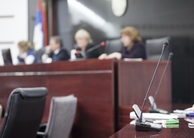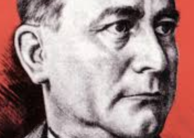The Legal Liability of Air Traffic ControllersTort Law and Contract LawWhen bringing a claim against an ANSP or an ATCO it must be determined whether the claim will be based upon contract law or tort law because different rules will apply and diverse consequences will flow from this distinction. Flynn claims that negligence is ‘’conduct which falls below a standard which is set by the law for the protection of the community against unreasonable harm’’.34 Tortious liability derives from the commission of a wrong as defined by the law. On the other hand, contractual liability derives from the breach of the terms of a contract existing between the parties involved in the litigation and only those specific individuals can claim for damages. The purpose of the Law of Tort is to compensate the victims and put them in the situation they would have been if they had not suffered damage. The wrongdoer must pay for his acts or omissions. The plaintiffs must show that the defendant owed them a duty of care, that this duty was breached and that their damages were reasonably foreseeable and sufficiently connected to the actions of the defendants; in other words they must establish a proximate causation link.35 This last requirement was emphasized in Hopson v Gulf Oil Corp36 where it was held that the breach of the duty of care by the defendant was a ‘’substantial factor in bringing about the accident’’ and that the accident was ‘’a reasonable consequence of the breach’’. In Schuler v US37 a US Court of Appeals reversed the decision of a district court that had reached the conclusion that the United Sates government was liable for the acts of an air traffic controller at Muskegon County Airport in Michigan who had failed to properly provide assistance to a light aircraft that had lost an engine shortly after take off and had then attempted to return to the airport to make an emergency landing. The appellate court found that the air traffic controller had not breached his duty to keep the runway clear from any obstacles and that the pilot was largely responsible for the crash. Similarly the need to establish a causation link between the actions of the defendant and the damages suffered by the plaintiff was stressed more recently in Kelly v US.38 In this case an airplane crashed after the pilot experienced a spatial disorientation. The plaintiff tried to demonstrate that should the ATCO had diverted the aircraft to another airport and provide better weather information to the pilot, such an accident would have never happened. The court found that these arguments were purely speculative and were insufficient to find the United States government negligent on behalf of its air traffic controller. In the United States, the great majority of actions for negligence against air traffic controllers were based upon the Federal Aviation Administration Manual. This guidebook contains comprehensive provisions dealing with all aspects of air traffic control such as the procedures that ATCOs must follow, how they must manage their time or what machinery they must use.39 In Ingham v Eastern Airlines, Inc40 the court held that an ATCO has no discretion as to whether he can deviate from the provisions laid down in the FAA manual. The government of the Unites States exercised its discretionary power at the planning level when it decides to put in operation a new control tower. The ATCO being at the operational level is thus obliged to strictly adhere to the FAA manual. In this case an aircraft crashed because an air traffic controller failed to inform the pilot that visibility has drastically dropped from one mile to three quarters of a mile.In Marino v United States41, a ground handling agent was injured when the truck that he was operating on the runway collided with a military airplane. The tower controller failed to take any actions to prevent this accident. The court held that the duty of cared of the ATCO extends to people working on the runways. It stated that it was ‘’ unnecessary to discuss whether these duties (duty of care) were primarily for the protection of pilots and planes, or for civilian workers and equipment’’. In Todd v United States42 it was held that an air traffic controller must issue clearances that will ensure the safety of the aircraft at all times with due diligence and in accordance with the Air Traffic Manual of the Federal Aviation Administration. In this case an aircraft crashed during landing in the State of Alabama. The weather conditions were above the IFR minima. The descendants of the deceased pilot alleged that the Federal Aviation Administration and its employees had been negligent when giving information to Todd about the attitude at which he should fly. The Court in Florida found that the pilot had been contributory negligent when he initiated his descent in an unfamiliar environment with low visibility and in a mountainous terrain. Furthermore the pilot failed to report his actions to the air traffic controllers. In Smerdon v United States43, an ATCO warned the pilots of bad weather conditions at the airport but nevertheless allowed the pilot to land. The aircraft crashed during landing because of heavy fog. The court held that the ATCO was not negligent because he had fulfilled his obligations. In Johnson. Jensen. Christenson v. United States44 an ATCO was found negligent when he failed to maintain enough distance between two aircrafts. In Harris v United Stated45, the court held that ATCO’s must provide assistance to pilots unfamiliar with an airport. In American Airlines v United States46, the court was of the opinion that ATCO’s have a legal obligation to warn pilots of dangers reasonably apparent to them. Sasseville believes that ‘’it will always remain extremely difficult to define the exact nature and scope of ATCA duties (...]. The standard of care to apply to them is bound to change constantly, following developments in aeronautical engineering and ATC technology’’.47 Depending on the facts of each particular situation, the circumstances may dictate an ATCO to issue clearances that go over and beyond the FAA Manual, his ultimate duty being once again the ensure the safety of the aircraft and the passengers. This obligation was stressed by the US Courts in Hartz v United States48. In this case a small plane crashed shortly after taking off behind a larger aircraft whose wing had created a tip vortex. The court found that the tower controller had been negligent when it cleared the deceased pilot to take off and when he failed to adequately caution the pilot of the vortex danger, not using the precise phraseology of the air traffic control procedures manuals, despite the fact that the pilot had documents available to him warning him against such risks. The court was of the opinion that the ATCO’s behavior was a proximate cause of the crash. In Sanbutch Properties v United States49, it was held that once the ATCO had given clearance to land, the pilot is then the only one responsible to make a safe landing. Contrary to the air carrier that has a contract with the passenger under the Warsaw and Montreal Conventions, air navigation service providers or air traffic controllers themselves, do not generally enter into contracts with airlines. Air navigation service providers do not have a proper contractual legal relationship with airlines even if they charge for their services. They perform a public service on behalf of the State deriving from the obligations of the latter under Article 28 of the Chicago Convention. In the same way, third parties on the ground do not enter into any contract transaction or agreement with air navigation service providers. However they also deserve protection because they do not derive any benefit from the activities of the aviation industry. 50 The nature of the legal relationship between airlines air navigation service providers may change in the future with the privatization of these agencies and the completion of the Single European Sky where blocks of airspace will be allocated to private ANSP.51 So most probably actions against a negligent air traffic controller will be brought under the rules of tort law. Strict Liability of Fault-Based LiabilityStrict liability and fault-based liability are two different concepts that need to be briefly explained. Whether the liability of an air traffic controller is strict or fault-based will depend upon national law. Under strict liability, a person may be found liable without any negligence needed to be proven. The plaintiff must only establish that he suffered damage that was reasonably connected to the actions of the defendant. In other words, he must establish a causal link. Under the concept of fault-based liability, as the name indicates, a defendant can only be found guilty if some form of negligence is established. In this situation the plaintiff must also prove that he suffered a wrong and establish the causation link. This is more favorable to the defendant State because the burden of proof then lies upon the plaintiff to establish fault and this is not an easy task. In most countries the liability of the air traffic controllers is fault based. This is due to the fact that aviation is no longer perceived as a dangerous activity. It is a fundamental mode of transportation that deserves protection. Some authors like Francis Schubert argue that ATCO’s actually reduce the risks created by the aviation industry and consequently deserve a more favorable treatment. In the early days of aviation in the US liability was strict but over the years this trend changed and now only negligence of an ATCO needs to proven in order to find an the US government liable. In The Netherlands and in the United Kingdom liability is fault based. In France the liability of the air traffic controller is based upon the commission of an act of gross negligence (‘’faute lourde’’). In Switzerland, liability is strict and there is no limit as to the amount of damages recoverable.52 VFR or IFRWhen bringing a claim against an air traffic controller it is important to determine whether the pilot was flying under Visual Flight Rules (VFR) or under Instrument Flight Rules (IFR). Under the former the pilot enjoys an exceptional freedom and bears most of the responsibilities for the safe conduct of the flight. If the weather and visibility conditions are good, a pilot can fly under these regulations. In this free flight environment he must ensure that he is seen and able to see other aircrafts in order to avoid collisions. There must be no clouds within 1500 meters horizontally and 1000 feet vertically and the flight visibility must be at least 8 kilometers.53 Under this set of regulations, the ATCO is not separating aircrafts (instead for the VRF flights operated in the airspace of class B as defined by Annex 11) and the pilot uses landmark references. In Coateny v Beckshire54, it was held that under VRF flights the ‘’primary responsibility for safe operation of the aircraft rests with the pilot, regardless of the traffic clearance’’. Nowadays most of the flights are conducted under IFR. Under IFR the pilot is furnished with more services than under VFR flights. Under IFR, flights are possible at night, in bad weather conditions such as low visibility and the pilot and the ATCO act as a team. They share responsibilities. The spectacular increase of air travel in terms of flights and technological advances such as the computerization of flights led to the fact that the pilot has gradually lost some responsibilities that were incumbent upon him at the beginning of civil aviation. He is no longer able to control all the parameters for a safe flight. Gradually ATCOs obtained a major role for the efficient operation of a flight.55 If an accident happens during a flight conducted under IFR, the responsibility and liability of the ATCO’s will be greater.Continued on Next Page » Suggested Reading from Inquiries Journal
Inquiries Journal provides undergraduate and graduate students around the world a platform for the wide dissemination of academic work over a range of core disciplines. Representing the work of students from hundreds of institutions around the globe, Inquiries Journal's large database of academic articles is completely free. Learn more | Blog | Submit Latest in Law & Justice |
















